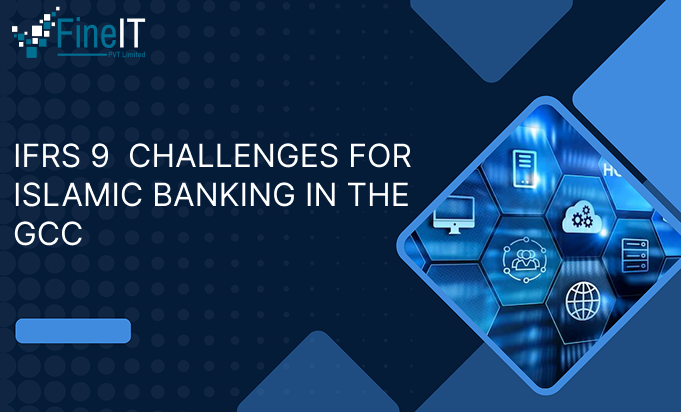The introduction of International Financial Reporting Standard 9 (IFRS 9) has brought about significant changes in how financial institutions report credit losses. While conventional banks have gradually adapted to the new requirements, Islamic banks in the Gulf Cooperation Council (GCC) face unique challenges due to the principles of Shariah-compliant finance. This article explores the specific difficulties Islamic banks in the GCC encounter in implementing IFRS 9 and highlights the areas where regulatory clarity and innovation are most needed.
What is IFRS 9?
IFRS 9 is a financial reporting standard developed by the International Accounting Standards Board (IASB). It replaces IAS 39 and introduces:
- A new classification and measurement model for financial assets and liabilities.
- An expected credit loss (ECL) approach for impairment instead of the traditional incurred loss model.
- New hedge accounting rules to better reflect risk management activities.
- The core objective of IFRS 9 is to enhance transparency and ensure early recognition of credit losses. However, these objectives intersect complexly with the foundational values and financial instruments used in Islamic banking.
Key Challenges for Islamic Banking in the GCC
1. Shariah Compliance and ECL Model Alignment
One of the biggest hurdles is aligning ECL models with Shariah principles, which prohibit interest (riba) and speculative activities (gharar). Islamic banks use unique contracts such as Murabaha, Ijara, Mudarabah, and Sukuk, which are structurally different from conventional financial instruments.
- Problem: The IFRS 9 model was designed with conventional debt-based products in mind.
- Challenge: Applying a credit loss model to equity-like or risk-sharing contracts without compromising Shariah compliance or misrepresenting the risk.
2. Lack of Historical Data and Market Benchmarks
Islamic banking in the GCC is relatively young compared to conventional banking systems, and many banks lack historical loss data required for effective ECL modeling.
- Problem: ECL models require long-term data on defaults, recoveries, and macroeconomic indicators.
- Challenge: Data insufficiency leads to modeling inaccuracies, over-provisioning, or under-provisioning.
3. Complexity in Classifying Islamic Financial Assets
IFRS 9 requires financial instruments to be classified based on their business model and contractual cash flow characteristics. For Islamic banks, many instruments contain embedded profit-sharing or lease-based features.
- Problem: Determining whether cash flows meet the “Solely Payments of Principal and Interest” (SPPI) criteria.
- Challenge: Ambiguity in classifying hybrid Islamic products like Sukuk Al Ijara or Mudarabah investments.
4. Integration of Macroeconomic Forecasting in ECL Estimation
IFRS 9 mandates banks to use forward-looking information, including macroeconomic forecasts. Islamic banks often operate with limited exposure to interest rate benchmarks, relying instead on profit rate benchmarks.
- Problem: Many Islamic products are structured with fixed profit margins, reducing their sensitivity to macro indicators used in conventional forecasting models.
- Challenge: Integrating relevant and accurate macro forecasts for Islamic asset performance under stress conditions.
5. Operational Readiness and System Limitations
Many Islamic banks in the GCC are mid-sized institutions that may lack the sophisticated risk modeling infrastructure and technical expertise to implement IFRS 9 effectively.
- Problem: ECL models require robust data analytics, stress testing, and scenario modeling tools.
- Challenge: Budget constraints and a shortage of qualified personnel hamper system upgrades and model validation.
Addressing the Challenges: A Way Forward
A. Shariah and Accounting Harmonization
There’s a growing need for collaboration between Shariah scholars and accounting standard-setters to develop guidance tailored to Islamic banks.
- Initiatives like the Accounting and Auditing Organization for Islamic Financial Institutions (AAOIFI) are instrumental in issuing standards compatible with both Shariah and IFRS 9 requirements.
B. Developing Islamic-Specific Credit Risk Models
Banks can build customized ECL models for Islamic contracts by:
- Pooling anonymized data across the industry.
- Using scenario-based analysis instead of traditional PD/LGD (Probability of Default / Loss Given Default) models.
- Incorporating qualitative risk indicators like customer behavior and contract restructuring history.
C. Investment in Technology and Talent
Islamic banks must invest in regtech solutions, data analytics platforms, and human capital development to enhance their IFRS 9 compliance frameworks.
D. Regulatory Support and Industry Collaboration
Regulators across the GCC, such as the Central Bank of the UAE, Saudi Central Bank (SAMA), and Bahrain’s CBB, should provide:
- Sector-specific guidelines on IFRS 9 for Islamic banks.
- Industry-wide data repositories to overcome data limitations.
- Incentives for compliance, including phased implementation timelines and technical support.
Conclusion
While IFRS 9 brings global standardization and risk sensitivity to financial reporting, it poses distinct challenges for Islamic banks in the GCC. From aligning Shariah contracts with expected credit loss models to overcoming data and infrastructure limitations, the path to full IFRS 9 adoption is complex. However, with collaboration between regulators, Shariah boards, and industry players, Islamic banks can overcome these hurdles and ensure transparent, resilient, and faith-compliant financial reporting.
